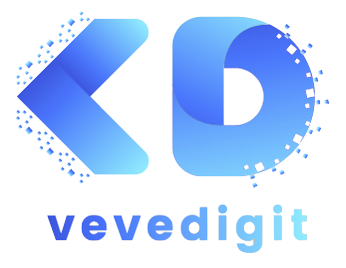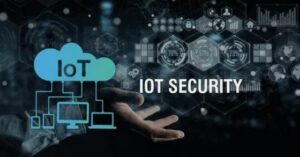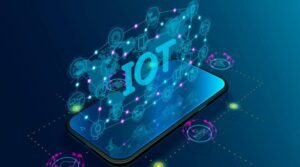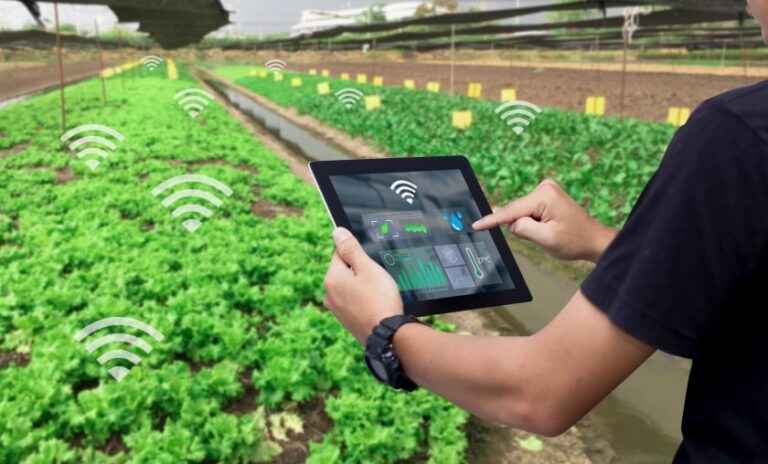The Internet of Things (IoT) has revolutionized the way we interact with technology, making our everyday lives smarter, more efficient, and increasingly interconnected. As innovation continues at a rapid pace, new IoT devices are reshaping various industries. These devices, powered by cutting-edge technologies like artificial intelligence (AI), machine learning, and edge computing, offer a glimpse into a future where our world is seamlessly integrated with intelligent devices. In this article, we explore how these innovative IoT devices are shaping the future across multiple sectors, from smart homes and healthcare to agriculture and transportation.
What is Makes IoT Devices Innovative?
New Innovative IoT devices are more than just “smart.” These devices are characterized by their ability to connect seamlessly to the internet, gather and exchange data, and make intelligent decisions in real-time. They incorporate advanced technologies like AI, machine learning, and edge computing to enhance their functionality. Edge computing, for instance, allows devices to process data locally, reducing latency and improving decision-making speed, which is particularly important in real-time applications.
Some key features of innovative IoT devices include:
- Automation: Many IoT devices are designed to operate autonomously, reducing the need for human intervention.
- Connectivity: These devices are connected through secure networks, enabling them to communicate with other devices and systems in the ecosystem.
- Data-Driven: IoT devices collect vast amounts of data, which is then analyzed to gain insights or trigger automated actions.
- AI Integration: Artificial intelligence allows devices to learn from data, adapt to user preferences, and optimize performance.
From AI-powered voice assistants to autonomous vehicles, IoT devices are transforming industries in unprecedented ways.
Smart Homes: IoT Devices Redefining Daily Life
One of the most popular applications of IoT technology is in smart homes. Innovative IoT devices are changing how we interact with our living spaces, making them more convenient, energy-efficient, and secure. Smart thermostats, lighting systems, and security cameras are just a few examples of how IoT is enhancing home life.
- Smart Thermostats: Devices like Nest or Ecobee allow homeowners to control the temperature of their homes remotely via smartphone apps. These thermostats learn the user’s schedule, adjusting temperatures for energy savings without compromising comfort.
- Voice Assistants: Devices such as Amazon Echo and Google Home have revolutionized how we interact with technology in our homes. These smart speakers, powered by AI and machine learning, can play music, control lights, provide news updates, and even order groceries—all through voice commands.
- Smart Security: IoT-powered security cameras and doorbells, like Ring, have made home security more accessible and reliable. With real-time alerts and remote monitoring, these devices enhance security and provide peace of mind for homeowners.
These smart devices create a more efficient and connected environment where users can manage their homes effortlessly, leading to improved convenience and cost savings.
IoT in Healthcare: Revolutionizing Patient Care
The healthcare industry has seen a transformative impact from IoT devices, which are improving patient care, reducing costs, and enhancing overall efficiency. These devices are enabling real-time monitoring, remote consultations, and personalized healthcare.
- Wearable Health Devices: Smartwatches like the Apple Watch and Fitbit can monitor heart rate, track physical activity, and even detect abnormal health patterns such as irregular heart rhythms. These wearables offer early detection of potential health issues, which can lead to better outcomes through prompt intervention.
- Remote Patient Monitoring: IoT devices are enabling healthcare professionals to monitor patients remotely, especially in rural or underserved areas. Devices like remote glucose monitors, blood pressure cuffs, and ECG monitors allow doctors to track their patients’ vital signs from a distance, improving access to care and reducing hospital visits.
- Smart Pills and Diagnostics: New IoT-enabled pill bottles are emerging that can track medication adherence and send reminders to patients to take their meds on time. Additionally, diagnostic tools powered by IoT allow doctors to analyze patient data in real-time, improving the speed and accuracy of diagnoses.
By enhancing monitoring and communication capabilities, IoT devices are improving patient outcomes and making healthcare more efficient and accessible.
IoT in Manufacturing: Industry 4.0

The manufacturing sector is undergoing a transformation with the integration of IoT devices, leading to the rise of Industry 4.0. This next generation of manufacturing emphasizes automation, data exchange, and advanced manufacturing techniques.
- Smart Factories: In smart factories, IoT devices monitor equipment performance, track production processes, and gather data on machine usage. This real-time data enables predictive maintenance, reducing downtime and enhancing production efficiency.
- Predictive Maintenance: IoT sensors embedded in machinery can predict when a piece of equipment is likely to fail, allowing for proactive repairs. This minimizes costly downtime and maximizes operational efficiency, as manufacturers can schedule maintenance during planned downtimes.
- Supply Chain Optimization: IoT devices are also helping optimize supply chains by tracking raw materials, goods in transit, and inventory levels. Real-time data improves decision-making and ensures that the right materials are available at the right time, reducing waste and inefficiencies.
With these advancements, IoT is playing a crucial role in improving efficiency, reducing costs, and driving innovation in manufacturing.
More Related Post: The Power of IoT Sensors: Transform Your Business Today
IoT in Agriculture: The Future of Smart Farming
IoT devices are also reshaping the agriculture industry, enabling farmers to use technology to optimize crop yields, conserve resources, and improve sustainability.
- Smart Sensors for Crop Monitoring: IoT sensors can monitor soil moisture, temperature, and nutrient levels, providing farmers with real-time data on crop health. This allows for precise irrigation and fertilization, reducing water waste and ensuring optimal growing conditions.
- Automated Irrigation Systems: Smart irrigation systems use IoT devices to automate water usage based on environmental conditions, ensuring crops receive the right amount of water at the right time. These systems help conserve water resources while maximizing crop yields.
- Livestock Tracking: IoT devices can also track the health and well-being of livestock. Wearable sensors monitor vital signs and activity levels, providing farmers with insights into the health of their animals. This data helps in early disease detection, leading to better animal welfare and more efficient farming practices.
IoT-powered smart farming is helping create more sustainable, efficient, and resource-conscious agriculture practices.
Innovative IoT Devices in Transportation
Transportation is another sector that is being transformed by IoT devices. These devices are making vehicles smarter, improving road safety, and enhancing the overall driving experience.
- Connected Cars: Modern cars are now equipped with IoT devices that allow them to connect to the internet, enabling features like real-time traffic updates, automated parking, and remote diagnostics. These connected cars improve the driving experience and enhance vehicle performance.
- Autonomous Vehicles: IoT devices play a crucial role in the development of autonomous vehicles. Sensors and cameras connected to IoT networks allow self-driving cars to navigate roads, detect obstacles, and communicate with other vehicles in real-time, enhancing safety and reducing accidents.
- Fleet Management: IoT technology is also revolutionizing fleet management by providing businesses with real-time data on vehicle location, fuel consumption, and driver behavior. This data helps optimize routes, reduce fuel costs, and improve operational efficiency.
The integration of IoT in transportation is paving the way for safer, more efficient, and smarter transportation systems.
The Role of AI and Machine Learning in IoT Devices
AI and machine learning are critical components of innovative IoT devices. These technologies enable devices to learn from data, make autonomous decisions, and continually improve their performance over time.
- AI-Powered Devices: Many IoT devices, such as voice assistants and security cameras, use AI to recognize patterns and predict outcomes. For instance, smart cameras use AI algorithms to distinguish between normal and suspicious activities, alerting users only when necessary.
- Real-Time Data Processing: Edge computing, combined with AI, enables IoT devices to process data locally, reducing latency and improving response times. For example, in autonomous vehicles, real-time data processing is essential for making instant decisions on the road.
- Self-Optimization: IoT devices powered by machine learning can adapt to user behavior over time. For example, smart thermostats learn from user habits and adjust the temperature automatically to maximize comfort and energy efficiency.
With the integration of AI and machine learning, IoT devices are becoming increasingly intelligent, adaptive, and capable of making real-time decisions.
Security Challenges and Solutions in IoT
Despite the vast potential of IoT, security remains a significant concern. The increasing number of connected devices creates more opportunities for cyberattacks, making it essential to address security vulnerabilities.
- IoT Vulnerabilities: IoT devices often have weak security protocols, making them susceptible to hacking, data breaches, and malware attacks. Devices that collect sensitive data, like health monitors or security cameras, are prime targets for cybercriminals.
- Advanced Security Protocols: To address these challenges, new security protocols are being developed. These include end-to-end encryption, secure boot processes, and multi-factor authentication to protect devices from unauthorized access.
- Data Privacy: As IoT devices collect vast amounts of personal data, ensuring data privacy is paramount. Companies are investing in robust encryption technologies and privacy regulations to safeguard user information.
The security of IoT devices will continue to be a top priority as the number of connected devices grows.
Conclusion
The future of IoT is incredibly promising, with new innovative devices revolutionizing industries ranging from healthcare and agriculture to transportation and manufacturing. As AI, machine learning, and edge computing continue to advance, IoT devices will become even smarter, more autonomous, and more integral to our daily lives.
From smart homes that make our lives more convenient to healthcare devices that improve patient outcomes, IoT is shaping the future of how we live, work, and interact with technology. However, as IoT continues to evolve, addressing security and privacy concerns will remain essential. The world of IoT is undoubtedly exciting, and it will be fascinating to see how these devices continue to innovate and transform our world
FAQs
1. What are IoT devices, and how do they work?
IoT (Internet of Things) devices are physical objects that are embedded with sensors, software, and other technologies to connect and exchange data with other devices or systems over the internet. They work by collecting data from their environment, processing it locally or in the cloud, and performing actions based on the insights derived from the data.
2. What are some examples of innovative IoT devices in the market?
Some innovative IoT devices include smart thermostats like Nest, voice assistants like Amazon Echo and Google Home, wearables like the Apple Watch, connected cars, smart security cameras, and automated agriculture systems. These devices leverage cutting-edge technologies like AI and machine learning to offer enhanced functionality and convenience.
3. How does IoT impact healthcare?
IoT devices in healthcare enable remote patient monitoring, wearable health devices, and smart medical equipment that collect real-time data to assist healthcare professionals in making accurate diagnoses and treatment decisions. They also provide patients with personalized care and improve accessibility to healthcare services.
4. What is the role of AI and machine learning in IoT devices?
AI and machine learning enhance IoT devices by enabling them to learn from the data they collect and make intelligent, autonomous decisions. For example, AI allows smart thermostats to adjust temperature based on user behavior, while IoT-powered security cameras use AI to detect unusual activities in real time.
5. How do IoT devices improve manufacturing efficiency?
IoT devices in manufacturing improve efficiency by monitoring equipment performance, predicting maintenance needs, and providing real-time data on production processes. This leads to less downtime, higher operational efficiency, better supply chain management, and reduced costs.





